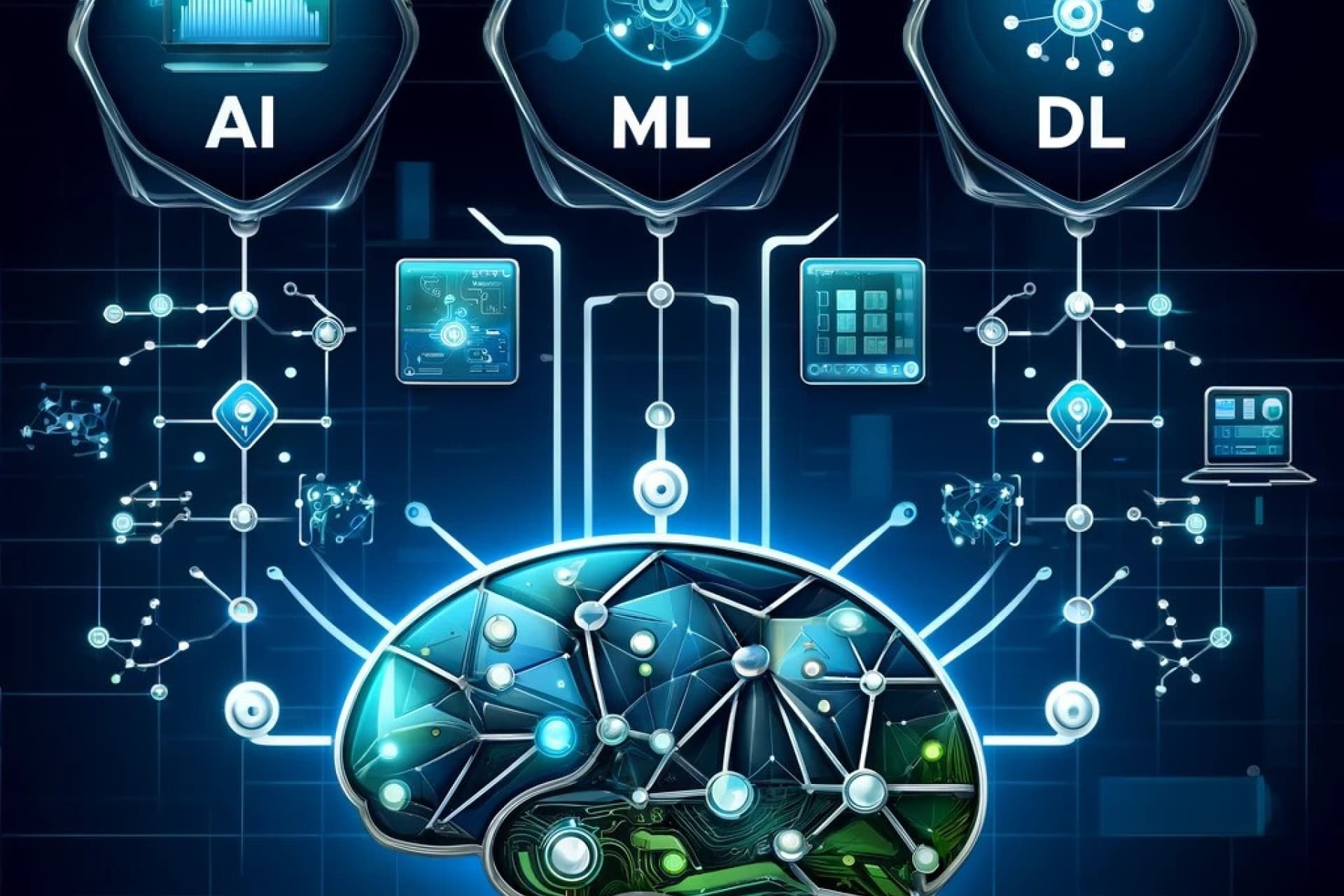Understanding Machine Learning
Machine learning (ML) has become a pivotal topic, garnering significant interest from both business professionals and technologists. This article provides a comprehensive overview of machine learning, distinguishing it from related fields such as artificial intelligence (AI) and deep learning, and exploring its various types and applications.
Distinguishing AI, ML, and Deep Learning
To begin, it is essential to differentiate between Artificial Intelligence (AI), Machine Learning (ML), and Deep Learning:
- Artificial Intelligence (AI): AI encompasses the development of systems that mimic human problem-solving and decision-making abilities.
- Machine Learning (ML): ML, a subset of AI, focuses on algorithms that learn from data to make predictions or decisions.
- Deep Learning: A subset of ML, deep learning automates the feature extraction process, enabling the analysis of extensive datasets with minimal human intervention.
This discussion will focus on machine learning and its various types.
Categories of Machine Learning
1. Supervised Learning
Supervised learning involves the use of labeled datasets to train algorithms, enabling the classification of data or the prediction of outcomes. This approach can be further divided into two main techniques:
-
Classification Models: These models categorize data into predefined groups. A practical application of classification is in customer retention strategies, where businesses aim to identify potential customer churn and take proactive measures to retain customers. Historical customer data, including activity and churn history, is used to build these models, helping predict which customers are likely to churn.
-
Regression Models: Regression involves building equations that use various input values, each weighted according to its impact on the outcome, to estimate an output value. In the airline industry, regression techniques are used to predict optimal flight pricing. Factors such as days before departure, day of the week, and destination are analyzed to determine the ideal price point, maximizing revenue.
2. Unsupervised Learning
Unsupervised learning utilizes algorithms to analyze and cluster unlabeled datasets, uncovering hidden patterns without human intervention. Key techniques include:
-
Clustering: Clustering algorithms group similar data points together. This method is commonly used in customer segmentation, where businesses seek to understand customer similarities and differences to enhance marketing efforts. By analyzing various customer attributes, such as purchase history and online activity, clustering algorithms help create targeted customer segments.
-
Dimensionality Reduction: Although not discussed in detail here, dimensionality reduction techniques reduce the number of input variables in a dataset, preventing redundancy and ensuring a more accurate representation of data.
3. Reinforcement Learning
Reinforcement learning is a semi-supervised learning approach where an agent learns to perform tasks by receiving rewards for correct actions and penalties for incorrect ones. This iterative process enables the agent to optimize its performance over time.
- Application Example: In the context of autonomous driving, reinforcement learning is used to teach self-driving cars how to navigate complex environments. The system learns to avoid collisions, adhere to speed limits, and follow traffic rules through continuous feedback and adjustment.
Conclusion
This article has outlined the foundational concepts of machine learning, highlighting the distinctions between supervised, unsupervised, and reinforcement learning. Each type of machine learning offers unique methodologies and applications, driving advancements across various industries.
For those interested in further exploration, additional resources on common machine learning algorithms and their applications in data science are available. Enhancing one’s understanding of these technologies can significantly impact one’s ability to leverage machine learning effectively.

